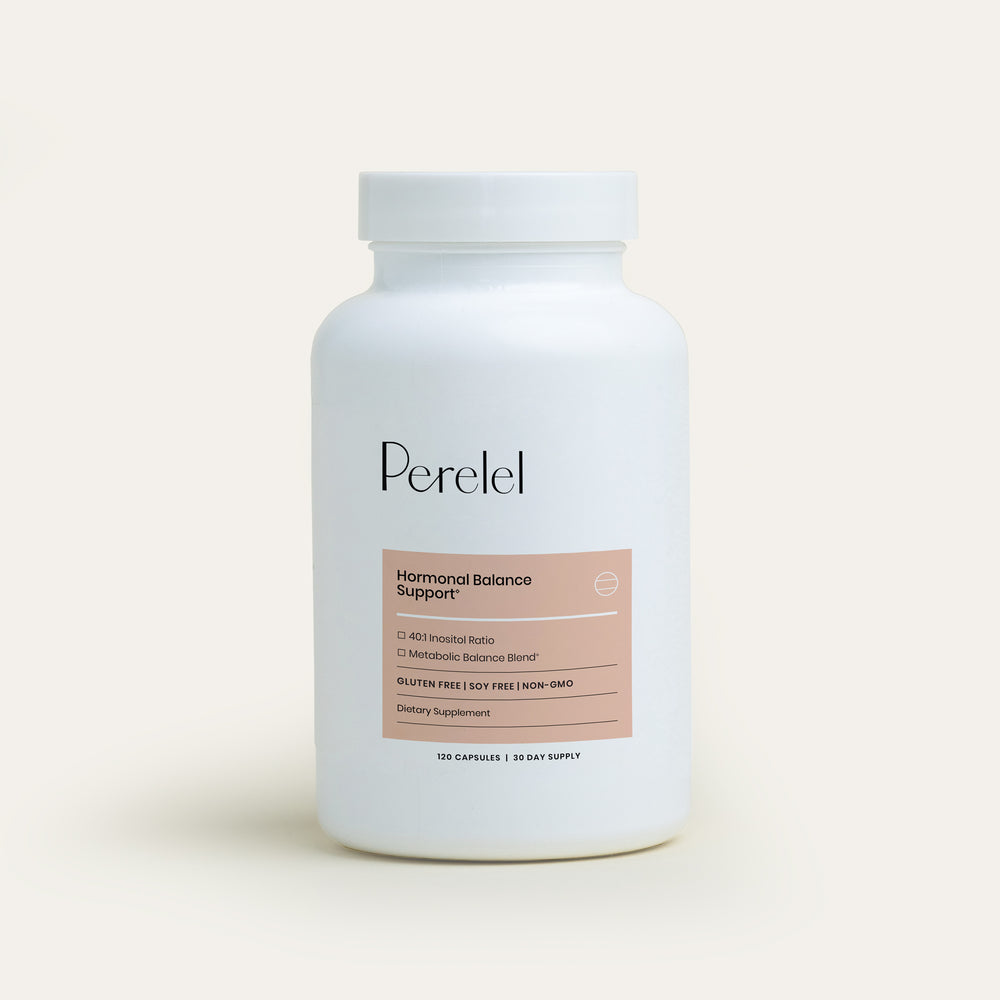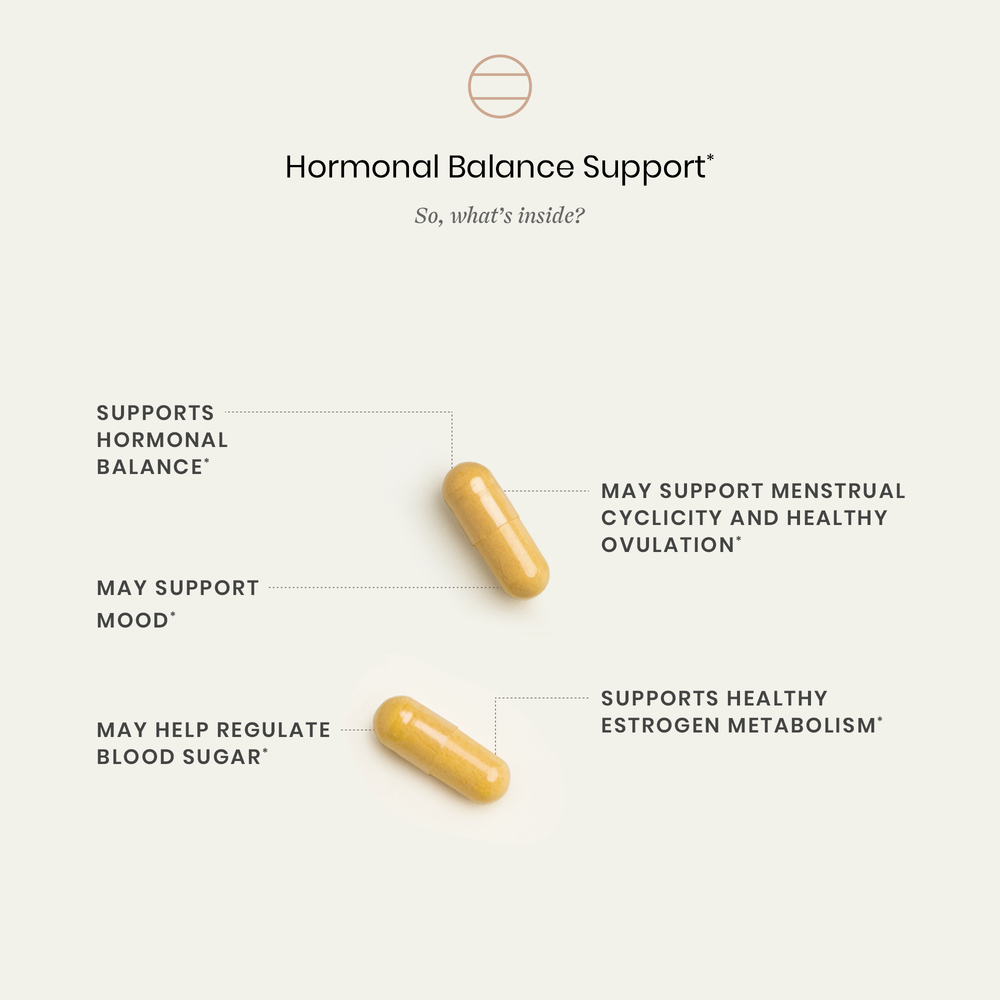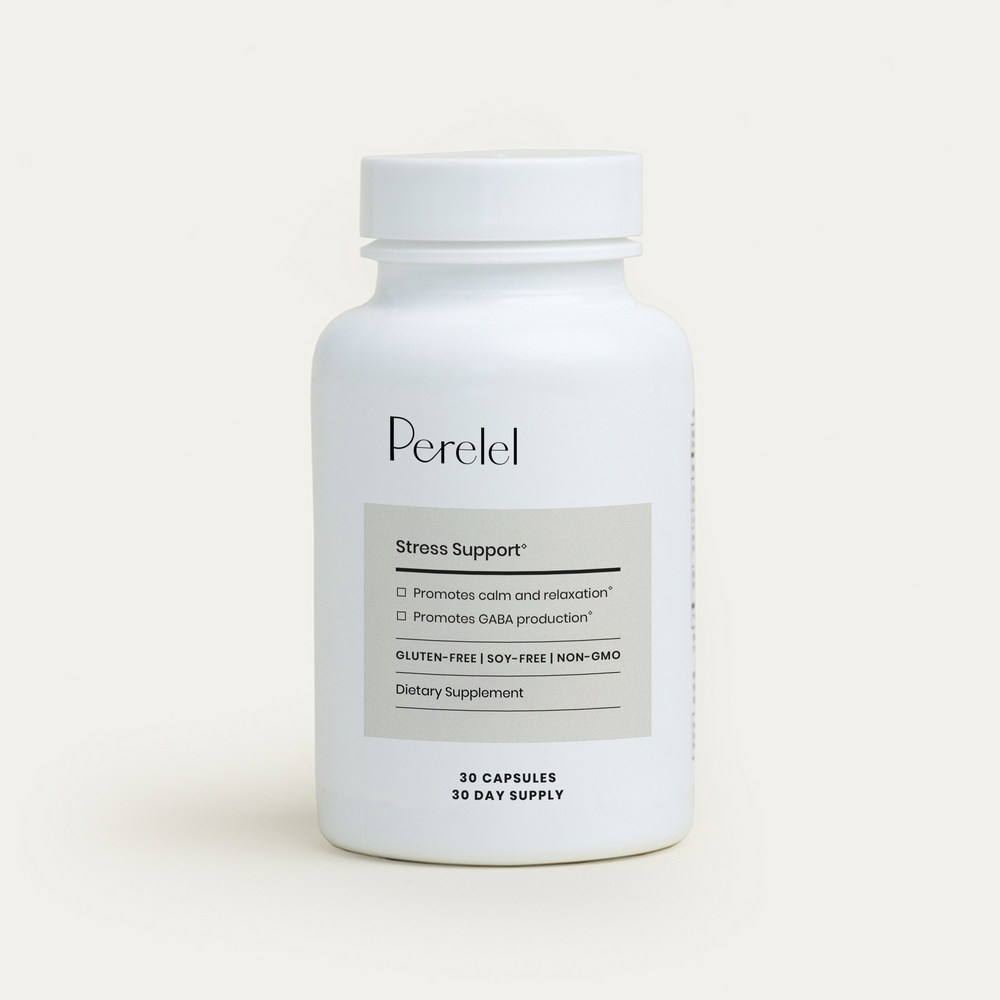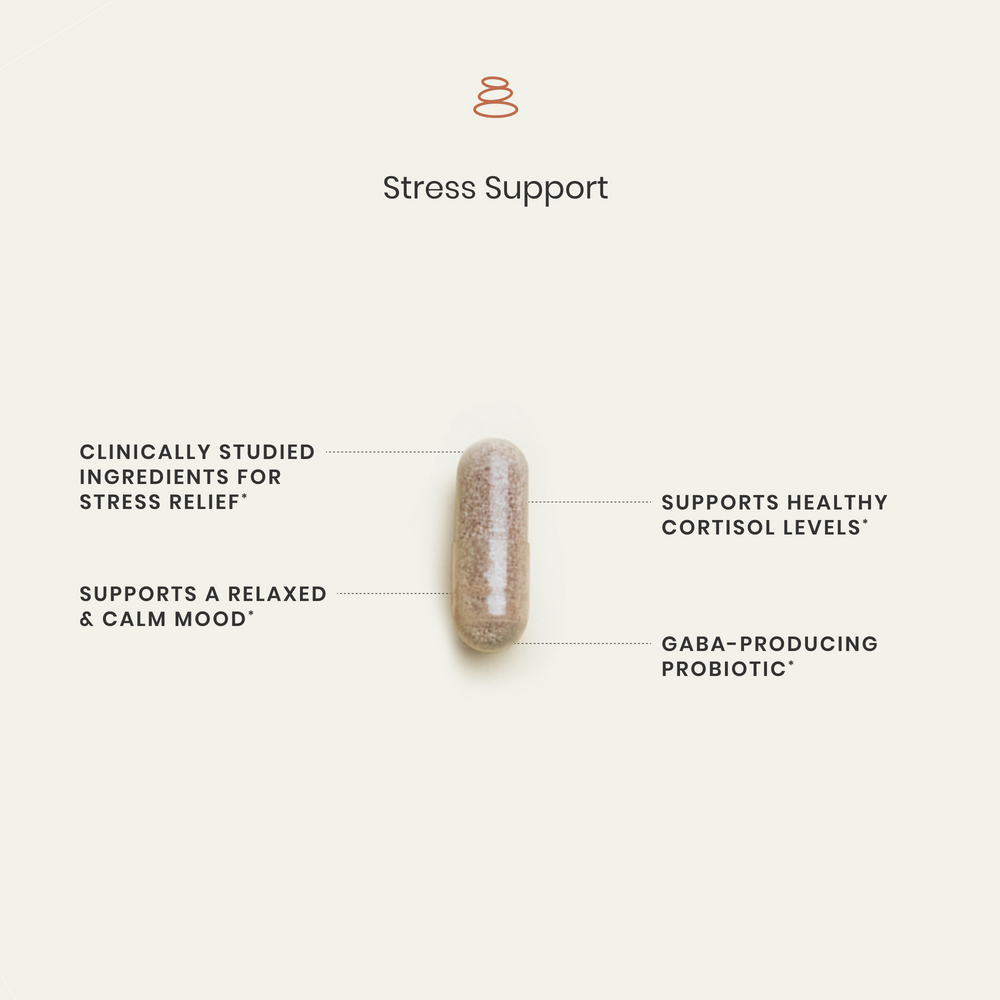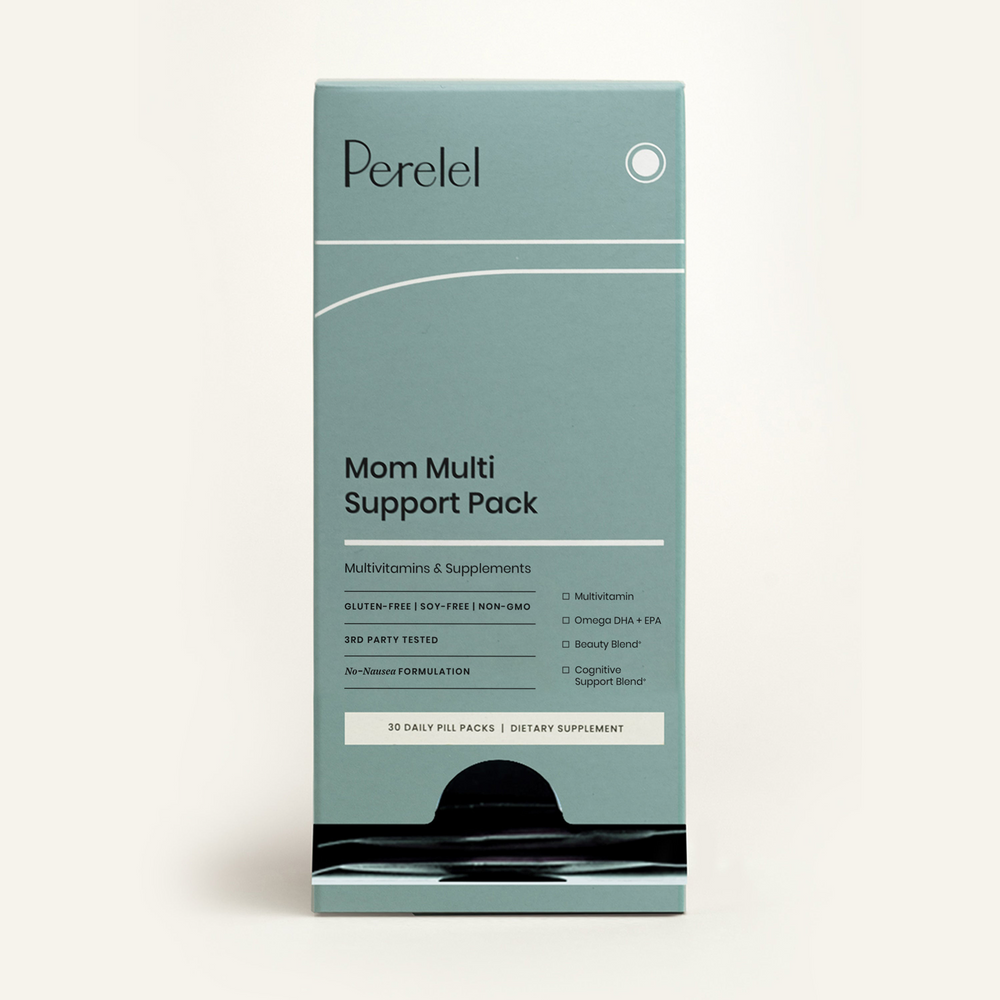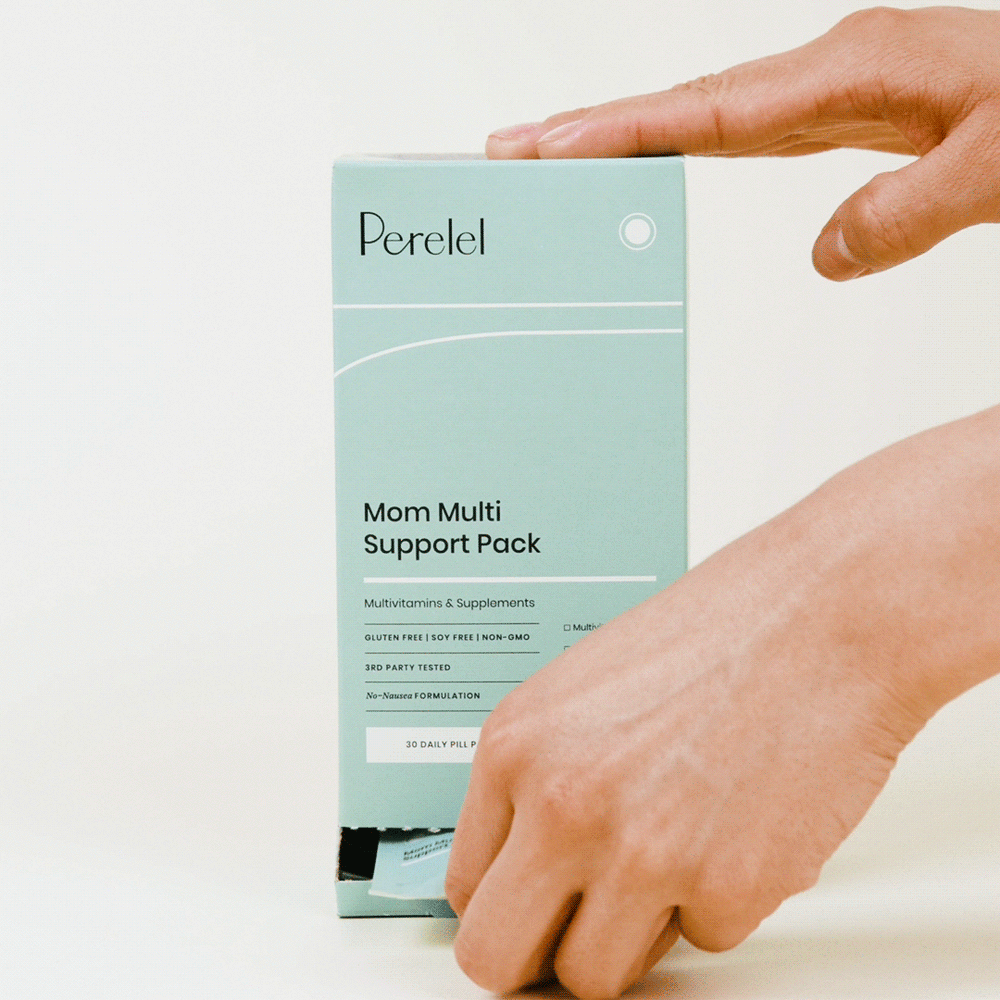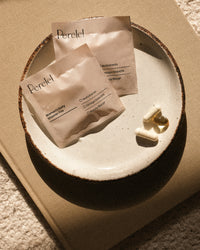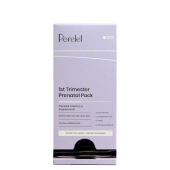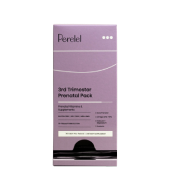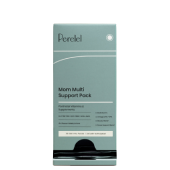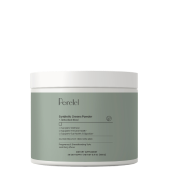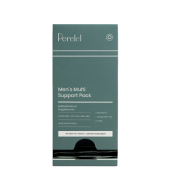Hormonal shifts and mood swings are often paired with a punchline about PMS, or the thought of being “hormonal” is thrown around like an insult. But what if we thought about it this way: hormones are powerful biochemical messengers that influence nearly every system in your body, including your brain, nervous system, and emotional regulation.
And when they fluctuate at different life seasons—especially around your menstrual cycle, during pregnancy, postpartum, or as you transition through perimenopause and menopause—they can create very real changes in your mood, memory, and sense of self.
So let’s stop minimizing it. Let’s understand it.
At Perelel, our mission is to support women with doctor-formulated, stage-specific vitamins that work with your body, not against it. That means acknowledging how deeply hormones and mood are intertwined—and offering proactive support rooted in research.
First: How Hormones Influence Mood
The major players in your hormonal cascade are estrogen, progesterone, and testosterone, along with hormones like cortisol and T3 and T4 (thyroid-producing hormones). These hormones ebb and flow cyclically, but when they become imbalanced—or shift more dramatically, as in perimenopause or postpartum—their effects are especially noticeable.
Here’s how some of these critical hormones work:
Estrogen: The Mood Stabilizer
Estrogen supports the production of serotonin (the “feel-good” neurotransmitter) and dopamine, both of which help regulate mood, focus, and emotional resilience. It also has neuroprotective properties, meaning it protects brain cells and enhances communication between them.
When estrogen dips, including during your luteal phase, post-birth, or while in perimenopause—you might feel:
-
Irritable or tearful
-
Anxious
-
Depressed or unmotivated
-
Foggy or forgetful
Research confirms this link: estrogen withdrawal is associated with increased risk of mood disorders in women, including premenstrual dysphoric disorder (PMDD) and perimenopausal depression (Gonda et al., 2008; Schmidt et al., 2000).
Progesterone: The Relaxing Hormone
Often called the “relaxing” hormone, progesterone stimulates GABA, a neurotransmitter that promotes calm and sleep. When progesterone levels are optimal, women tend to feel soothed and grounded. But when it drops—or becomes imbalanced relative to estrogen (a common occurrence in perimenopause and PCOS)—you may feel:
-
Restless
-
Wired but tired
-
Sleep-deprived
-
Edgy or overwhelmed
This is particularly relevant in the second half of your menstrual cycle (the luteal phase), when progesterone is meant to rise—but may not, depending on stress, age, or ovulation patterns.
Cortisol: The Stress Signal
Cortisol, your body’s main stress hormone, interacts with estrogen and progesterone in complex ways. High cortisol can suppress ovulation, reduce progesterone, and exacerbate estrogen dominance symptoms. Chronic stress—whether emotional or physiological—can amplify mood swings by disrupting this hormonal triad. If chronic stress is something you’re concerned with, consider adding Stress Support to your vitamin routine for a formula of clinically-studied ashwagandha, saffron, holy basil, and a probiotic that produces GABA (which, as we can see above, supports progesterone).
Shop the Article:
Hormonal Life Stages That Impact Mood
Mood swings don’t come out of nowhere—they often coincide with predictable hormonal transitions.
Menstrual Cycle (especially late luteal phase)
This is when estrogen and progesterone fall, which can trigger PMS symptoms like:
-
Mood swings
-
Anxiety or irritability
-
Crying spells
-
Low energy or motivation
For some, these symptoms are mild. For others, they can be debilitating. PMDD, a severe form of PMS, affects about 5–8% of women and is now recognized as a true mood disorder.
Postpartum
Estrogen levels drop over 100-fold in the first days after giving birth. This hormonal crash—combined with sleep deprivation and identity shifts—can lead to:
-
Postpartum blues
-
Postpartum depression (affecting 1 in 7 women, according to the CDC)
-
Increased anxiety and emotional overwhelm
Vitamin deficiencies, especially in B6, omega-3s, and iron, are also linked to postpartum mood dysregulation (Leung & Kaplan, 2009).
Perimenopause
Perimenopause is the 4-10+ year transition leading up to menopause, when hormone levels fluctuate more unpredictably.
Symptoms often include:
-
Mood swings
-
Anxiety or panic attacks
-
Depression or apathy
-
Brain fog
Experts speak about perimenopause being a puberty in reverse, and how the erratic downshifts in estrogen cause neurological, emotional and intense mood shifts.
How Nutritional Support Can Help
Mood support isn't just about managing symptoms—it’s about creating resilience through nourishment. That’s why our Women’s Daily Vitamin Trio and Peri Support Pack include nutrients known to support hormonal balance, emotional stability and brain health.
Nutrients that Support Mood
-
Vitamin B6 & B12: Help produce serotonin and dopamine. Deficiency has been linked to increased risk of depression and anxiety.
-
Magnesium: Supports GABA activity and can reduce PMS symptoms.
-
Omega-3 Fatty Acids (DHA + EPA): Shown in multiple studies to reduce symptoms of depression and improve emotional regulation, especially in perinatal and perimenopausal women.
-
Ashwagandha: An adaptogenic herb that helps regulate cortisol and supports emotional resilience under stress.
-
DIM + Rhubarb Extract: Support estrogen metabolism and may help reduce estrogen dominance-related mood swings in perimenopause.
What Else Impacts Mood?
Sleep
Hormonal changes can disrupt sleep—and poor sleep makes mood regulation harder. Supporting melatonin production (via magnesium, B6, and adaptogens) can help create deeper rest.
Blood Sugar
Fluctuating insulin and glucose levels can intensify mood swings. Keeping blood sugar stable with regular meals and nutrients like chromium, berberine, and L-carnitine (included in our Peri Support Pack) can promote steadier energy and mood.
Movement & Mindfulness
Exercise boosts dopamine and serotonin—and regular movement has been shown to reduce PMS and perimenopausal mood symptoms. Breathwork, meditation and somatic movement also help regulate the nervous system.
You’re Not “Too Emotional”—You’re In Tune
If you’ve ever felt like your emotions are “too much” or that you’re not handling things the way you used to, know this: you’re not broken. You’re responding to real, physiological changes that deserve care.
At Perelel, we believe your health journey should be honored, not minimized. Whether you're navigating the ups and downs of your cycle, the intensity of postpartum, or the unpredictability of perimenopause, our formulations are here to support you. We meet your biology where it is—with targeted, clean, clinically-backed nutrients that care for all of you.
You deserve to feel like yourself. And you’re not alone.
This article is for informational purposes only. It is not, nor is it intended to be, a substitute for professional medical advice, diagnosis, or treatment and we recommend that you always consult with your healthcare provider. To the extent that this article features the advice of physicians or medical practitioners, the views expressed are the views of the cited expert and do not necessarily represent the views of Perelel.
Resources
-
Gonda, X., et al. (2008). Effects of estrogen on the serotonergic system and their relevance to affective disorders. Neuroscience, 206, 1–11. https://doi.org/10.1016/j.neuroscience.2009.05.066
-
Schmidt, P. J., et al. (2000). Estrogen withdrawal and mood in women with and without a history of depression. The New England Journal of Medicine, 342(12), 829–833. https://doi.org/10.1056/NEJM200003233421202
-
Freeman, E. W., et al. (2014). Associations of hormones and menopausal status with depressed mood in women with no history of depression. JAMA Psychiatry, 71(5), 534–542. https://doi.org/10.1001/jamapsychiatry.2013.3798
-
Leung, B. M. Y., & Kaplan, B. J. (2009). Perinatal depression: Prevalence, risks, and the nutrition link—a review of the literature. Journal of the American Dietetic Association, 109(9), 1566–1575. https://doi.org/10.1016/j.jada.2009.06.368
-
Maki, P. M., et al. (2019). Omega-3 fatty acids and cognitive function in women. Menopause, 26(3), 306–312. https://doi.org/10.1097/GME.0000000000001215
-
Daley, A., et al. (2008). Exercise for premenstrual syndrome. Cochrane Database of Systematic Reviews, 2008(4), CD004386. https://doi.org/10.1002/14651858.CD004386.pub2
-
Kerry Group. (n.d.). Sensoril Ashwagandha research studies. Retrieved April 2025, from https://www.kerry.com/products/nutrition-ingredients/wellness-and-health/sensoril-ashwagandha/studies
- Gonda, X. et al (2008). Mood parameters and severe physical symptoms of the female reproductive cycle. Neuropsychopharmacol Hung. https://pubmed.ncbi.nlm.nih.gov/18959140/






